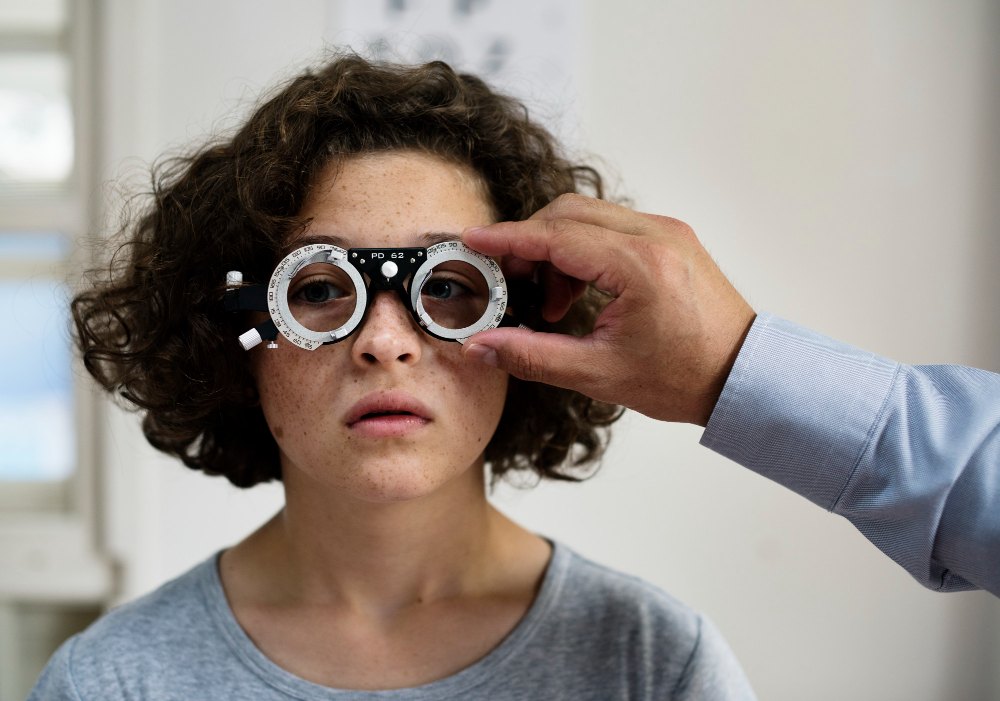
Do you know almost 150 million people in America suffer from refractive errors, one of the most common ocular issues? This error occurs if the light entering the eye bends abnormally because of changes in the size or shape of the eye.
Two common refractive errors diagnosed in eye exams are myopia and astigmatism. Both conditions occur because of irregular eye shape and impact how your eyes focus light. Like similarities, there are many differences in both.
Read through this blog to learn everything about astigmatism and myopia so that you can better understand your eye care needs.
What is Myopia?
Myopia, also known as near-sightedness, affects one third of the population. It is a visual problem in which you can not see far objects clearly. In this condition, your eyeball becomes too elongated, or the cornea becomes curved. These irregularities interfere with light entering the eye and cause it to focus in front of the retina. This is why far objects become unclear to you.
Normally, myopia starts during childhood and can get stabilized during 20-40 years of your age. Moreover, it is a genetic issue and can run in families. Extended screen time can also contribute to its development.
Symptoms of Myopia
Here are common symptoms of myopia:
- Difficulty in seeing far objects like road signs or whiteboards in schools
- Eye Strain
- Headache
- Need of squinting to see things clearly
- Excessive Blinking
- Rubbing your eyes continuously
Treatment of Myopia
As myopia develops at an early age, it is better to have regular eye exams of children before the situation gets worse. Eye care doctors will examine their eye structure and test vision to see if they suffer from myopia or not.
Generally, contact lenses and glasses are common treatments for myopia. However, if you are above 18, a doctor can also suggest surgical vision correction to get rid of this condition completely.
What is Astigmatism?
If the front surface of your eye, the cornea, has an irregular shape, astigmatism occurs. Also, if your lens has any irregularity, it can also lead to astigmatism. In this condition, your cornea becomes oval or cylindrical instead of round, and the eye doesn’t focus light on a common point but instead bends it in different directions. As a result, you experience blurry vision at far and near distances.
Astigmatism is a common eye condition. Some people are born with it as genetics play a great role in development of this refractive error. Apart from that, eye injuries or surgeries can also cause astigmatism.
Symptoms of Astigmatism
If you are suffering from minor astigmatism, there might not be any specific symptoms. However, in extreme cases, you will experience any of the following signs:
- Difficulty in Night Vision
- Eye Strain
- Irritability in eyes
- Squinting
- Blurred vision
- Double Vision
Treatment of Astigmatism
Just like myopia, astigmatism can be treated with contact lenses or glasses. In severe cases, you can also have LASIK surgery.
However, early diagnosis is always important to protect your vision. During the examination, your doctor would conduct different tests to see how your eyes bend light and suggest a prescription accordingly.
Differences between Myopia and Astigmatism
Though both conditions look the same apparently, as both affect the vision, in reality, they are different in the following ways:
☍ Vision Issues
In both conditions, far-away objects look blurry. But myopia has nothing to do with near vision. On the other hand, astigmatism makes near objects blurry as well. However, in some cases, myopia can also give rise to other ocular complications, like retinal issues affecting central vision.
☍ Eye Shape
Though both conditions occur when the eye shape is different than usual, the shape differs in both cases. In myopia, your whole eye becomes elongated, or the cornea becomes too steep or curved. Whereas in astigmatism, the shape of the lens or cornea changes in different ways. Generally, the cornea is like the shape of a football rather than being round.
☍ Rarity
Astigmatism is the most common refractive issue; according to statistics, it accounts for 13% of refractive errors. But sometimes, it is present in such a mild form that you see no noticeable symptoms. Myopia, on the other hand, is becoming prevalent in case of degenerative myopia. According to research, around 2050, almost half of the global population will suffer from myopia.
☍ Severity
Both conditions negatively impact vision and disturb daily life quality. But comparatively, high myopia has a greater risk to eye health.
Final Thoughts
To conclude, myopia and astigmatism are two different refractive errors that impact your vision badly. Understanding their symptoms and causes can help you differentiate them and choose effective treatments accordingly.
If you ever feel any of their symptoms, it is better to visit our professional eye care center. We will thoroughly examine your eye condition and, after making a proper diagnosis of refractive error, will suggest the best treatment for your eyes, ensuring better vision.
FAQS
Both conditions can affect your vision badly. Astigmatism, however, can be minor and symptom-free. Whereas myopia can progress into more complex forms and get worse than astigmatism.
No, it is not possible to cure astigmatism completely. But with proper treatment you can control its progression and manage your blurry vision effectively.
If left untreated, myopia can lead to retinal detachment or glaucoma, whereas astigmatism can cause significant visual discomfort and eye strain.
